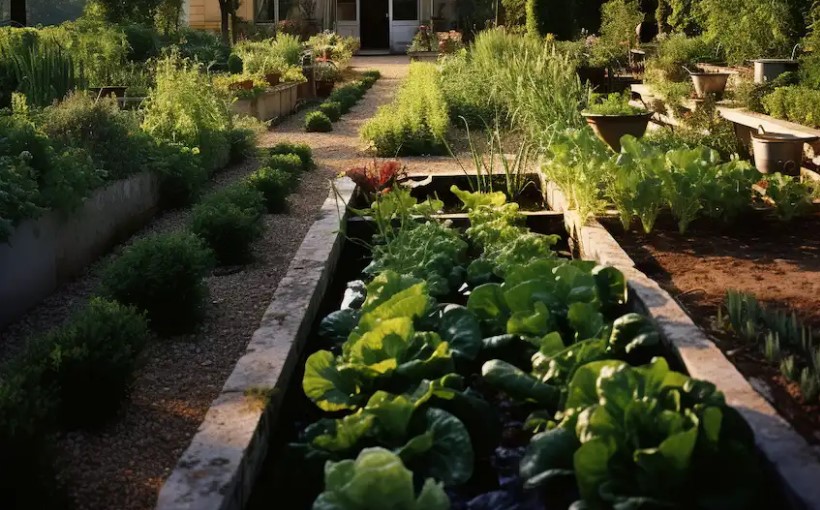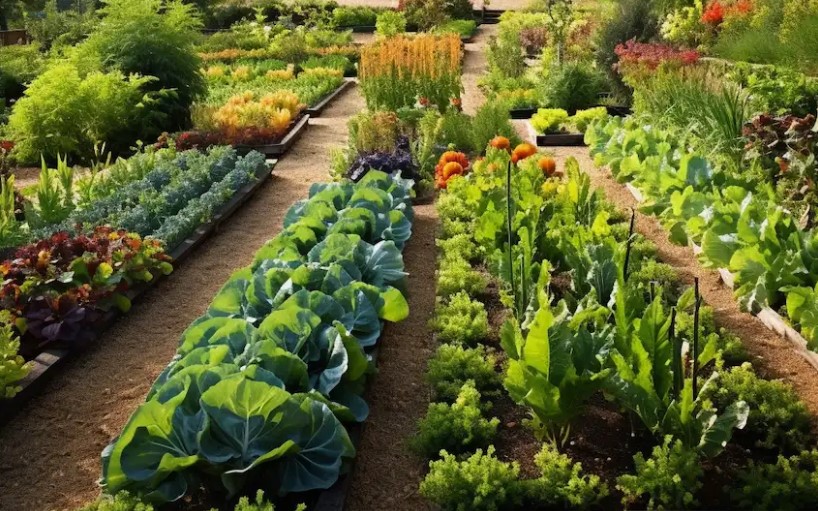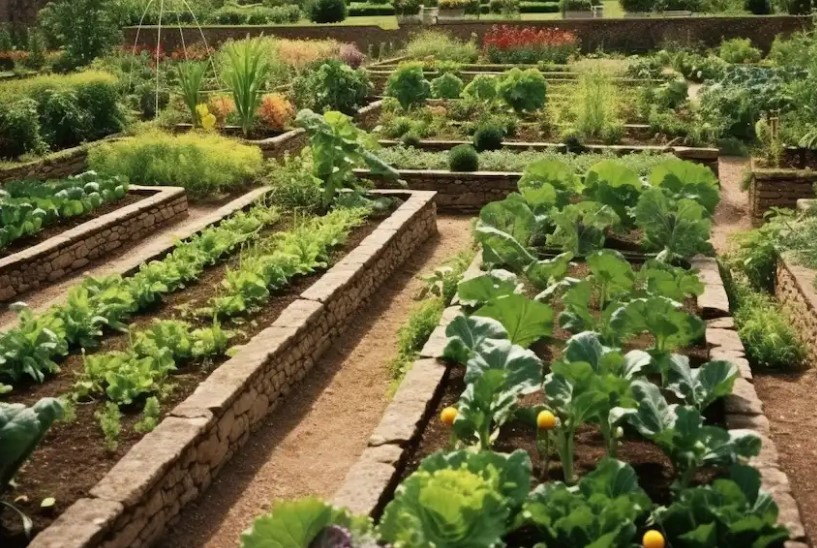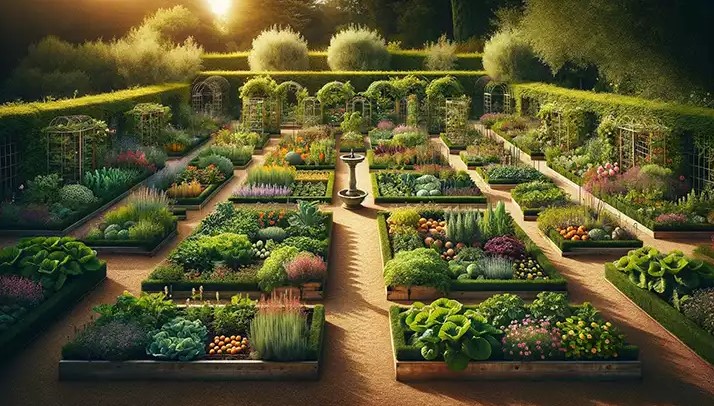
Step 1: Planning Your Potager
1.1. Choose the Location
- Select a spot that receives at least six hours of sunlight daily. Proximity to your kitchen is ideal for easy harvesting.
1.2. Design the Layout
- Traditional potagers have a symmetrical layout, often in a square or rectangular shape, divided into equal-sized beds with pathways in between.
1.3. Plan for Rotation
- To maintain soil health and reduce pests, plan your plantings so you can rotate crops each season.
Step 2: Preparing the Site
2.1. Clear the Area
- Remove weeds, stones, and any debris from the area. Ensure it’s a blank canvas for your potager.
2.2. Improve the Soil
- Add compost and organic matter to enrich the soil. Good soil is the foundation of a thriving garden.
2.3. Install Borders and Pathways
- Define your garden beds with borders made from wood, stone, or brick. Lay down gravel or bark mulch for the pathways.
Step 3: Selecting Plants

3.1. Choose a Mix of Plants
- Combine herbs, vegetables, fruit bushes, edible flowers, and ornamental plants. Consider color, height, and seasonality to ensure a beautiful and productive garden year-round.
3.2. Incorporate Companion Planting
- Use companion planting principles to enhance growth, deter pests, and encourage pollination.
Step 4: Planting Your Potager
4.1. Start with Perennials
- Plant perennial herbs and flowers first, as they will form the backbone of your garden.
4.2. Add Annuals and Vegetables
- After the last frost date, plant your chosen vegetables and annual herbs. Intersperse them with flowers to attract pollinators and beneficial insects.
Step 5: Adding Structural Elements
5.1. Install Supports
- Add trellises, stakes, or obelisks for climbing plants like beans, peas, and flowering vines.
5.2. Create Focal Points
- Use elements like birdbaths, sundials, or a central fountain to add character and focal points to your garden.
Step 6: Maintenance
6.1. Regular Care
- Water, weed, and prune regularly. Monitor for pests and diseases and address them promptly.
6.2. Harvest Often
- Pick ripe produce frequently to encourage further production. Enjoy the fruits (and vegetables) of your labor in your kitchen!
6.3. Seasonal Adjustments
- As seasons change, replace spent plants with season-appropriate varieties to keep your potager productive and attractive year-round.

A potager is more than just a garden; it’s a living artwork that marries aesthetics with functionality. With careful planning, preparation, and love, your potager will provide you with a tranquil space to enjoy nature’s bounty and beauty right in your backyard. Embrace the process, and watch as your French kitchen garden comes to life, providing a feast for the eyes and the table.










